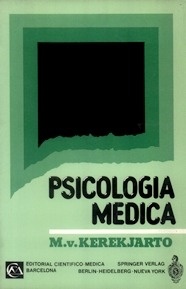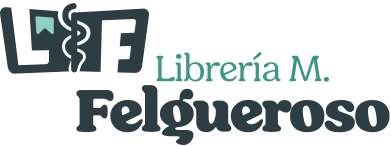Reseña o resumen
Our Genes, Our Choices: How Genotype and Gene Interactions Affect Behavior, Second Edition explains how the complexity of human behavior, including concepts of free will, derives from a relatively small number of genes which direct neurodevelopmental sequences. Are people free to make choices or do genes determine behavior? Paradoxically, the answer to both questions is "yes," because of neurogenetic individuality, a new theory with profound implications. Here, author David Goldman uses judicial, political, medical, and ethical examples to illustrate that this lifelong process is guided by individual genotype, molecular and physiologic principles, as well as by randomness and environmental exposures.Written in an authoritative yet accessible style, the book includes practical descriptions of the function of DNA, discusses the scientific and historical bases of genethics, and introduces the topics of epigenetics and the predictive power of behavioral genetics.
Cover image
Title page
Table of Contents
Copyright
Disclaimer
Dedication
About the author
Preface
Chapter 1: Introduction: Thou mayest choose
Abstract
References
Chapter 2: The jinn in the genome
Abstract
Fifteen minutes of fame
Some famous geneticists and why they are famous
The jinns of knowledge and technology
Revolutions in culture and evolution of genes
Genes, brain, and individuality
The neurogenetics of determinism and freedom
References
Chapter 3: 2B or not 2B?
Abstract
Anecdata and data
A common stop codon causing impulsivity and hyperarousal
Validating an impulsivity gene in a mouse model
References
Chapter 4: Stephen Mobley and his X chromosome
Abstract
The death of Stephen Mobley
The Kallikak effect
Mobley demands a genetic test
Combining gene and hormone to predict impulsivity
Carrying kohl to Italy
The state of DNA in prediction of violence
References
Chapter 5: Dial multifactorial for murder: The intersection of genes and culture
Abstract
A murder in the lab
Missing puzzle pieces, an obstacle to reductionism
Why are some societies more violent?
Guns or people?
A fierce people
Civilizing people
Violent youth
References
Chapter 6: Distorted capacity: The measure of the impaired will
Abstract
Conscious and unconscious behavior
Context appropriate and inappropriate behavior
Personality types and choices
The inheritance of impulsivity, and what it means
Impulsivity differs from person to person and from species to species
Zero-trial learning
Impulsivity and aggression in context
Measuring impulsivity and aggression
Integrating measures and genes
Measuring the brain
The arousal (thymos) of youth
Animal models of arousal, impulsivity, and aggression
References
Chapter 7: Distorted capacity: Neuropsychiatric diseases and the impaired will
Abstract
Impulsivity, diminished capacity, and neuropsychiatric disease
Disorders of impulse control
References
Chapter 8: Inheritance of behavior and genes for behavior: Gene wars
Abstract
The debate on the heritability of behavior
The genome encodes reaction range
Choice and reaction range
Reaction range and free will
Twin studies and controversies they provoked
The debate on genes for behavior
People are not monkeys
The politics of behavioral genetics
Antipsychiatry: Are psychiatric diagnoses valid?
References
Chapter 9: The scientific and historic basis of genethics
Abstract
Standards of science and evidence
Ethics of research: Trust, but verify
Genes, jobs, and groups
The Genetic Information Nondiscrimination Act
Gene therapy
Group consent and individual consent
Beyond a pretense of autonomy
References
Chapter 10: The world is double helical: DNA, RNA, and proteins, in a few easy pieces
Abstract
DNA recipes
Polymorphism
Protein polymorphism
DNA polymorphism
Measured ancestry
References
Chapter 11: The stochastic brain: From DNA blueprint to behavior
Abstract
Self-assembly
Cell assembly
Interactomes
Stochasticity
Cascades, chaos, and great attractors
Brain assembly
Fire together, wire together
Fractal neurons
Stochasticity in higher order brain structure
The stochastic basis of individual and group intelligence
Rules guiding the chaos of brain evolution and development
Sense of self
References
Chapter 12: Reintroducing genes and behavior
Abstract
Behavioral prediction, a science imperfect
Commercialization of behavioral prediction
The future of genetic behavioral prediction
A gene causing anemia
A gene causing self-mutilation
A gene causing cognitive deficiency
References
Chapter 13: Warriors and worriers
Abstract
A common genetic variant for warriors and worriers
Executive cognitive function
Cognitive flexibility and free will
Perseveration
Worriers and warriors
References
Chapter 14: How many genes does it take to make a behavior?
Abstract
Single genes
Polygenic and epistatic models of behavior
Bayesian reasoning How to use prior probability
Behavior and the single gene
References
Chapter 15: The genesis and genetics of sexual behavior
Abstract
Gender and sex
Biological determinants of gender
We are love machines
Sneaker males
Slaves to sex: The difficulty of turning off the sex drive
How people modulate and harness their sex drives
Taboos
Homosexuality and the gay gene
Elliot Gershon and the in-depth family paradigm
Discovery of the gay gene
Is homosexuality inherited from one's mother?
Genes for homosexuality
References
Chapter 16: Gene-by-environment interaction
Abstract
Variations on the theme of gene-by-environment interaction
Ancient environment genome interaction
Nature nurture
What is gene-by-environment interaction?
Genes that modulate stress resilience
Intermediate phenotype and endophenotype
Interactions leading to psychiatric disease
Animal models of gene-by-stress interaction
Love, in monkeys?
References
Chapter 17: The epigenetic revolution: The imprint of the environment on the genome
Abstract
Measuring environmental contingency
An imprint of experience in the DNA
Types of epigenetic imprint
Wiping the epigenetic slate clean
But not quite clean
Measuring epigenetic variation
First look at the epigenetic depth of the human genome
References
Chapter 18: Time out for free will
Abstract
Temporary and longer lasting impairments of choice
Social implementations of the science of choice
Ideology in genomics: The example of race and ancestry
References
Chapter 19: The top-down neurogenesis of free will
Abstract
Conscious automata
A brief manual of parenting
Free will and the conundrum of behavioral causality
Exorcizing genetic behavioral determinism
Neurogenetically influenced behavioral archetypes
References
Chapter 20: Neurogenetic origins of free will
Abstract
Reference
Index

